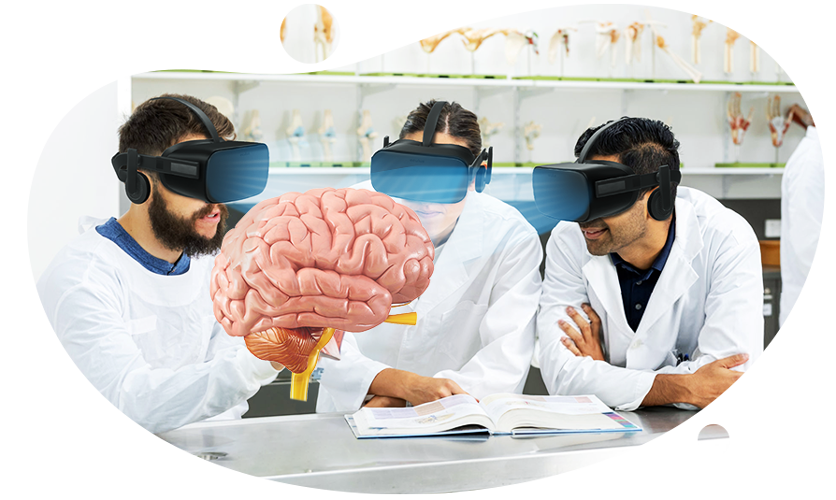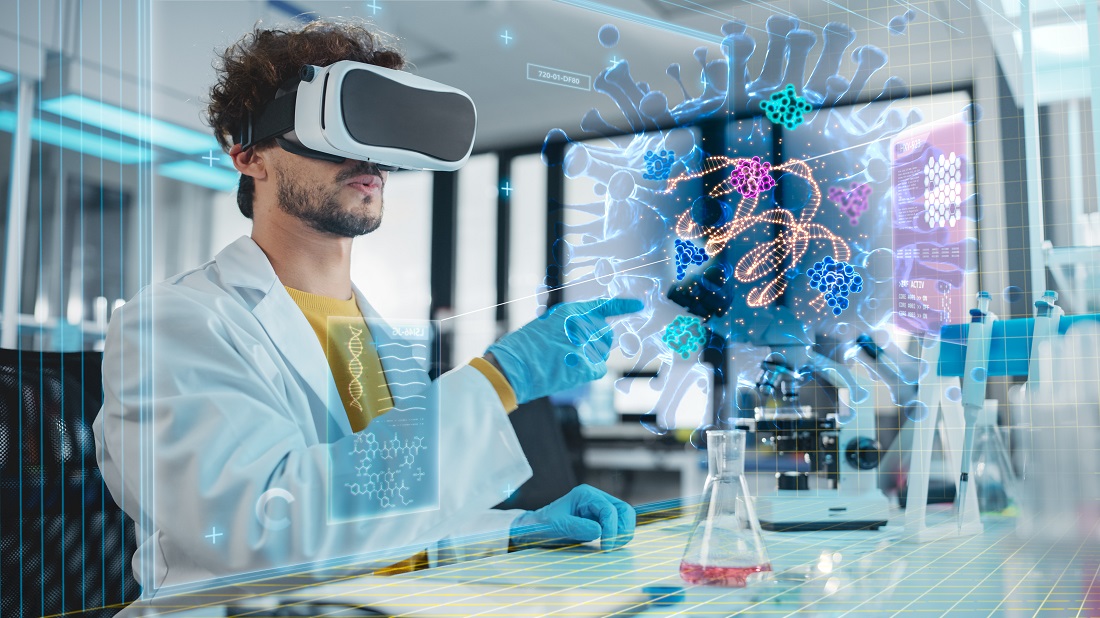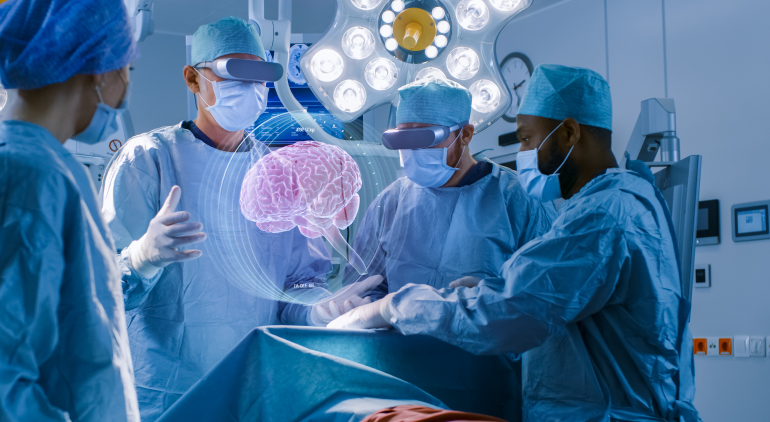Virtual Reality Applications in Medical Education

The medical path is a long one and often, the road that is not chosen by many due to the resilience and courage required. The path to a medical career begins once a student has entered medical school, and the suffering begins.
However, recent advancements have introduced innovative tools and technologies to alleviate some of the challenges in medical education. One such advancement is the integration of virtual reality applications in medical education.
These applications provide students with immersive learning experiences, allowing them to explore complex medical procedures and scenarios in a virtual environment.
So, burning the midnight oil becomes studying with cutting-edge technology, and working fingers to bones during rotations becomes a norm enhanced by the power of virtual reality.
Medical students set out on an arduous journey. But this is not new information. With the technological advancements that we are seeing in the medical field today, the burden on medical students has only resulted in a net increase of content that they need to learn and practise.
It would seem then, that adding Virtual Reality (VR), one of the latest trends in higher education to the mix only increases the difficulty level of medical education! Or does it?
VR is not a novel technology that humanity has only recently stumbled upon. We have allowed ourselves decades to test the uses of VR and have found it flourishing in almost every industry it is used in.
What is even more astounding about this technology is its easy usability which lightens workload instead of one having to worry about catching up with new technology.
The amalgamation of medicine and VR has been revolutionary! Numerous lengthy and invasive surgical procedures have been permanently transformed into short non-invasive and safer surgical procedures with help of VR in surgical training.
Consequently, VR has also revved the engine of medical education, sending it to soar heights and allowing students to actually feel elated instead of stressed and drained.
1. Virtual Training Enhancing Learning
Traditional teaching methods include visual materials either in the form of texts or 2D diagrams and videos or verbal lectures from professors. Incorporating VR in medical education has allowed students to learn traditionally and self-learn through VR.
In simpler words, traditional methods of learning will always remain a base, but the incorporation of VR technology in college classrooms can transform 2D diagrams and videos into 3D figures, that you can “touch” and “experiment” with.
This system of learning keeps students engaged and content with the quality of learning and can motivate them to learn more in a way that is less draining and just as effective (if not more).
2. Medical Training In VR

Oftentimes, in traditional learning methods, curiosity remains insatiate. This occurs because being able to watch the internal workings of the human body is not possible all the time in real life.
However, with VR based applications like iXR Labs, the human anatomy can be viewed, and the simulations even allow students to slice parts of organs for virtual experimentation.
These innovative virtual reality applications in medical education provide a dynamic and interactive platform for students to explore and dissect the intricacies of the human body, satisfying their curiosity and fostering a deeper understanding of medical concepts.
Furthermore, VR labs for medical educations solves the problem of not being able to afford or get resources as well. VR based application of iXR Labs is a virtual reality lab that has a variety of equipment.
Medical students will be able to gain practical knowledge through VR labs without having to drain their energy in an actual laboratory!
3. Building Empathy
A significant part of being a healthcare worker is being able to understand what a patient and a patient’s family needs. More often than not, what they need is consolation and reassurance.
However, being in a hospital, healthcare workers are often acclimatized to situations and, understandably, tend to lose their nurturing nature. VR in healthcare can mean awakening this lost sense of compassion by allowing doctors to empathize.
Students at the University of New England have been able to experience what it feels like to be a patient with hard of hearing or one with loss of vision and this has helped them empathize with the patients and their families.
"Explore the Exciting Frontier of Virtual Reality in Medical Education: Step into Tomorrow's Classroom Today and Revolutionize Your Learning Experience!"
4. Surgical Training and Preparation In VR

VR in medicine and surgery has shown to be useful to doctors and surgeons as well. Surgeons and healthcare workers will be able to virtually "practice" for surgery beforehand, thanks to the integration of virtual reality applications in medical education.
This technology allows them to immerse themselves in realistic surgical simulations, enhancing their skills and confidence before they step into the operating room.
Actual simulations of the patient’s conditions and areas that require surgery can be designed to help doctors assess the situation and be prepared instead of going in blind. This would decrease the percentage of medical errors phenomenally and make medicine far more efficient.
With these advantages of VR in medical education, students can also practice actual surgeries in VR labs before even becoming actual healthcare workers. VR can allow medical students to prepare for all kinds of surgeries, increasing their efficiency as future doctors and surgeons!
5. Working with the Greatest Minds
Dr. Shafi Ahmed conducted the first VR surgery in 2016 which proved to be a great success and revealed one of the greatest advantages of VR in medicine. This actual surgery can be viewed by medical students in a first-person arrangement.
Students will be in place of Dr. Shafi Ahmed performing the surgery! This firsthand experience of actually conducting the surgery doesn’t only allow medical students to gain experience but it will also prepare them for what surgery entails in real life!
VR is a gift to medical education and the uses of medical education mentioned above are only the beginning. They are only the best five. Unimaginable uses of virtual reality applications in medical education and here, we have only begun to scratch the surface!
.png)
.png)



